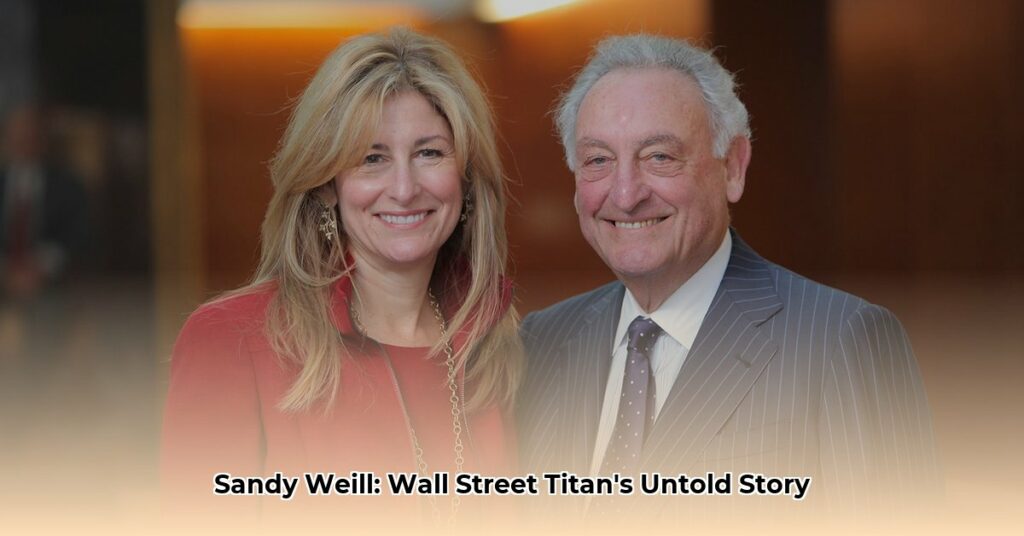The Rise of a Financial Titan: From Stock Runner to Billionaire
Sanford “Sandy” Weill’s journey, from a $150-a-week stock runner at Bear Stearns in 1955 to a Wall Street titan with an estimated net worth of $1 billion, is a captivating narrative of ambition, risk-taking, and transformation. This isn’t merely a tale of accumulating wealth; it’s a story of reshaping the very structure of modern finance. Weill’s legacy, however, is complex and multifaceted, marked by both remarkable achievements and significant controversies.
Building an Empire: The Genesis of Citigroup
Weill’s entrepreneurial spirit ignited in 1960 when he co-founded the brokerage firm Carter, Berlind, Potoma & Weill. This marked the beginning of a series of strategic mergers and acquisitions that would define his career. The sale of his firm, Shearson Loeb Rhoades, to American Express in 1981 for nearly $1 billion not only significantly boosted his wealth but also positioned him as a major force in the industry. This period at American Express also afforded him the opportunity to mentor Jamie Dimon, the current CEO of JPMorgan Chase, highlighting Weill’s influence on the next generation of financial leaders.
The defining moment of Weill’s career came with the 1998 merger of Travelers Group and Citicorp, creating the financial behemoth Citigroup. This audacious move challenged the long-standing Glass-Steagall Act, which separated commercial and investment banking, and Weill played a pivotal role in its eventual repeal. As Citigroup’s CEO and Chairman, Weill spearheaded the “financial supermarket” model, offering a wide array of financial services under one roof. This innovative concept became an industry standard, fundamentally altering the landscape of modern banking.
A Legacy of Philanthropy and Mentorship
Beyond the realm of high finance, Weill has demonstrated a commitment to philanthropy, donating substantial sums to education, healthcare, and neuroscience research. His significant contributions to institutions like Weill Cornell Medical College and the Weill Institute for Neurosciences underscore his dedication to social impact. Moreover, his mentorship of Jamie Dimon speaks to a legacy that extends beyond personal wealth, shaping the leadership and trajectory of other influential figures in the financial world.
Navigating Turbulent Waters: The 2008 Financial Crisis and Beyond
The 2008 financial crisis presented a significant challenge to Weill’s legacy. Citigroup, the institution he built, faced near collapse, raising questions about the long-term viability of the “financial supermarket” model. While the crisis had multiple contributing factors, some experts suggest that Weill’s earlier emphasis on deregulation may have played a role in the ensuing instability. This period underscores the complex and often unpredictable nature of the financial world, where even the most successful strategies can have unintended consequences.
Charting a Fortune: Sandy Weill’s Net Worth Over Time
Visualizing Weill’s financial trajectory offers valuable insights into the key moments that shaped his wealth. While precise figures can be elusive due to the fluctuating nature of assets, the following table highlights pivotal events and their impact:
| Year | Event | Impact on Net Worth |
|---|---|---|
| 1955 | Begins career at Bear Stearns | Initial earnings |
| 1960 | Co-founds Carter, Berlind, Potoma & Weill | Foundation for future growth |
| 1981 | Sells Shearson Loeb Rhoades | Substantial increase (~$1 billion) |
| 1998 | Forms Citigroup | Exponential growth |
| 2008 | Financial Crisis | Significant decline |
| 2021 | Estimated net worth at $1 billion | Recovery and continued growth |
Controversies and Criticisms: A Nuanced Perspective
Weill’s career is not without its share of controversy. The accusations of biased research practices involving analyst Jack Grubman and the subsequent $400 million global research settlement cast a shadow over his legacy. Some critics argue that Weill prioritized profits over objective analysis, while others maintain that he operated within the accepted norms of the time. The 2008 financial crisis further complicated his narrative, with some suggesting that his earlier advocacy for deregulation contributed to the market instability. These controversies underscore the importance of ethical considerations in the financial industry and the potential consequences of unchecked ambition.
A Lasting Impact: A Complex and Evolving Legacy
Sandy Weill’s impact on the financial world is undeniable. He revolutionized banking with the “financial supermarket” model, mentored future leaders, and contributed significantly to philanthropy. However, his legacy is intertwined with controversies that raise questions about the ethical dimensions of his business practices. Weill’s story serves as a compelling case study of the complexities of leadership in the high-stakes world of finance, reminding us that even the most successful figures have both admirable accomplishments and areas that warrant critical examination. Ongoing research and debate continue to shape our understanding of his contributions, suggesting that his legacy will likely remain a subject of discussion and reevaluation for years to come.



